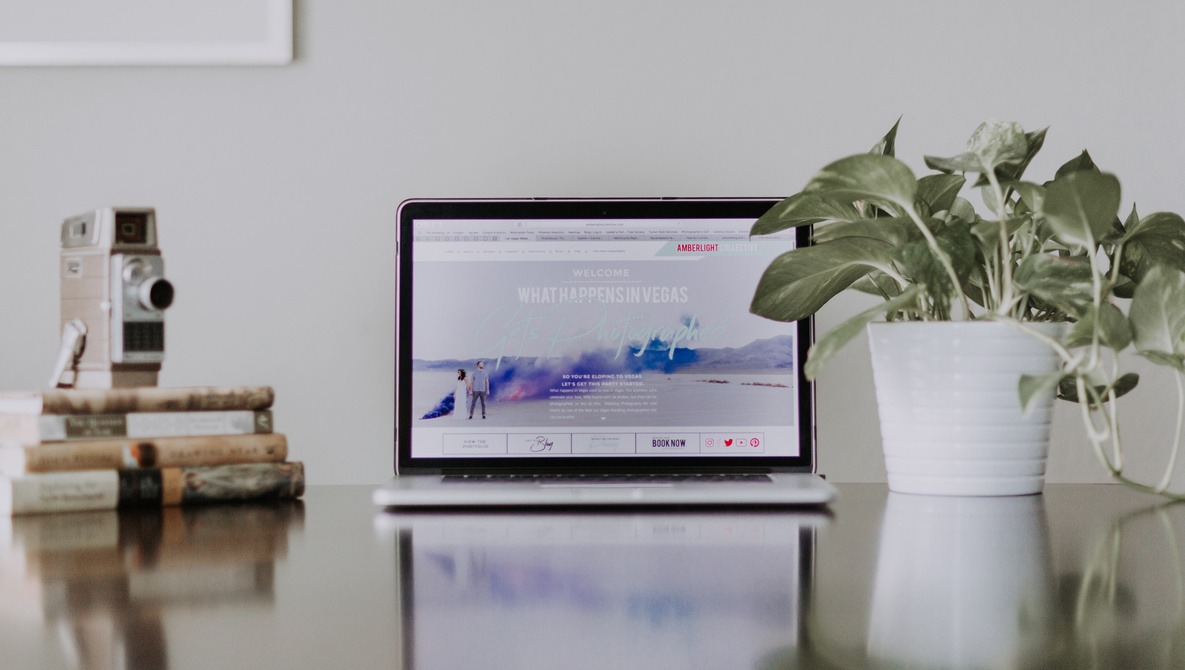If you’re not creating your website with the correct goals in mind, you may be having a hard time converting your website visitors into paying clients. As creatives, we value good visual design and we want to make sure our websites are not only appealing, but are also showcasing our photography in a dynamic way. However, if we’re not asking ourselves the right questions while designing our websites, we may be losing possible clients. Here are a few potential reasons why your website visitors aren’t turning into paying clients.
Your Landing Page Doesn’t Have An End Goal
The main goal of any landing page for a business should be to create a call to action leading to an offer. In a photographer’s case it would be something like urging visitors to inquire for a photo session, or urging them to inquire about pricing for a photo package. Creating content on a landing page without any real intention or end goal can likely confuse a website visitor or cause them to look elsewhere for a website that concisely addresses whatever pain point they have.
When examining your website’s landing page and its copy, make sure that you’ve created a call to action that quickly addresses a pain point in an engaging and catchy way. Using a catchy headline and subheadline that is short, exciting, and offers something valuable to the reader is a good way to quickly grab their attention while also informing the reader of your value and how you can help them.
You May Not Have a Strong “About Me” Page
The “about me” page is usually one of the first pages that visitors go to from the landing page, before even visiting the portfolio or pricing pages of a website. This is because modern consumers are looking for an experience and connection with a brand or business. This is all the more relevant to small business owners because we don’t have the luxury of having pre-built trust with the consumer like a big name, well-known corporation might have. One of the biggest mistakes photographers make is not focusing enough on the “about me” section of their websites. If you haven’t given much thought to your “about me” page, I urge you to take a second look and consider adding more content.
Making sure that your “about me” section has a photo of you, as well as information on your past (both professionally and a bit personally), will help readers empathize with you as a brand. Also, having future goals as well as accolades and accomplishments will help bolster your brand’s trustworthiness. Don’t write your “about me” page in third person if you can help it. Be as personal as possible because people want to feel like they’re talking to a real person.

You’re Putting Too Much Information on Your Website
This might seem counter-intuitive, but having too much information on your website may be leading potential clients into not inquiring with you. Oftentimes, website visitors are visiting multiple websites and looking at price points in search of what they perceive to be the best value. If we’re putting too much information on our website, customers may not feel inclined to reach out for more information. Getting a website visitor to inquire, ultimately turning them into a lead, should be our goal, so providing too much information may not be beneficial.
Something else to consider is that oftentimes consumers don’t actually know the value we have to offer them (even though they may think they do), so having the opportunity to actually talk to a lead and educate them on our value is extremely helpful.
A few things to consider would be not putting all pricing on your website, save for your starting prices to help visitors know your average price point. Another helpful tip would be to add a call to action after any bit of information you display on your website offering even more information if they reach out to you. Once they reach out to you, it's helpful to send over even more helpful information to increase the value of your interaction with them.
Creating a Strong Website Experience
Always keeping an end goal in mind and knowing what to avoid will help you to have a killer website that gives a great experience to your website visitors. Revisit areas of your website that you haven’t given much thought to in the past and ask yourself if those sections align well with your end goals and your ultimate “why” behind what you’re hoping your website will achieve for your visitors.
In the end, our websites are one of the most powerful tools we have for our photography businesses. Most of us don’t have a storefront, so our website is the first impression for potential clients. It's important that the first impression is a strong one, guiding our visitors into the customer experience we want to provide for them.






